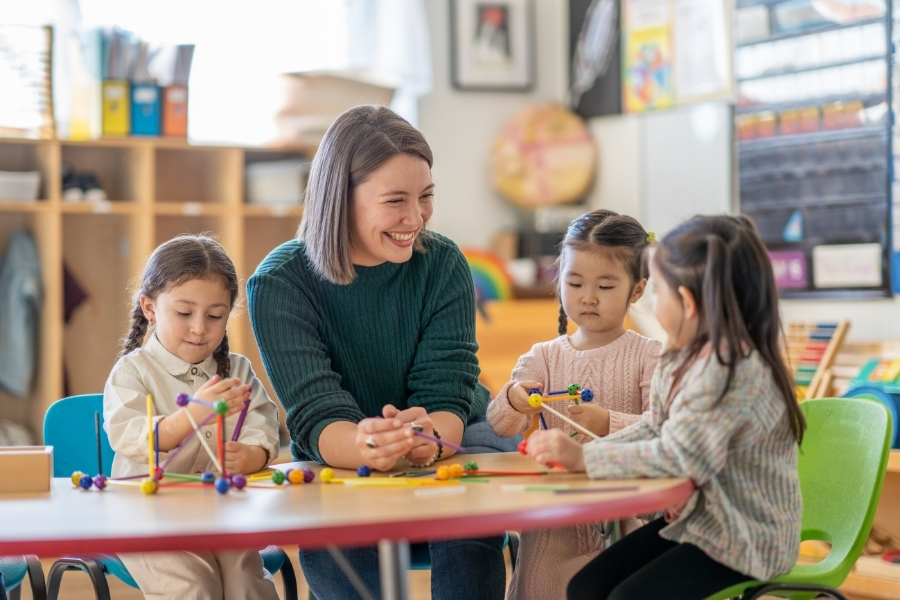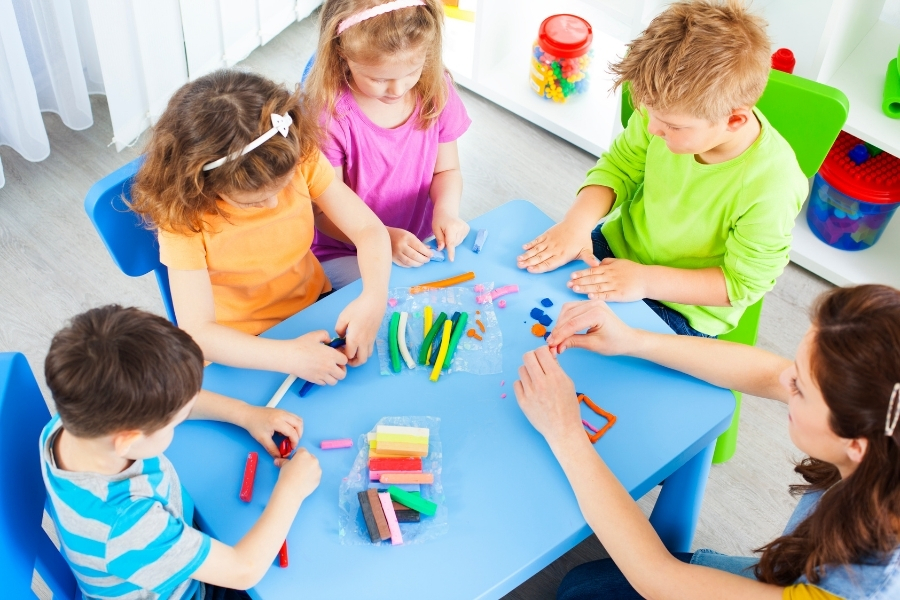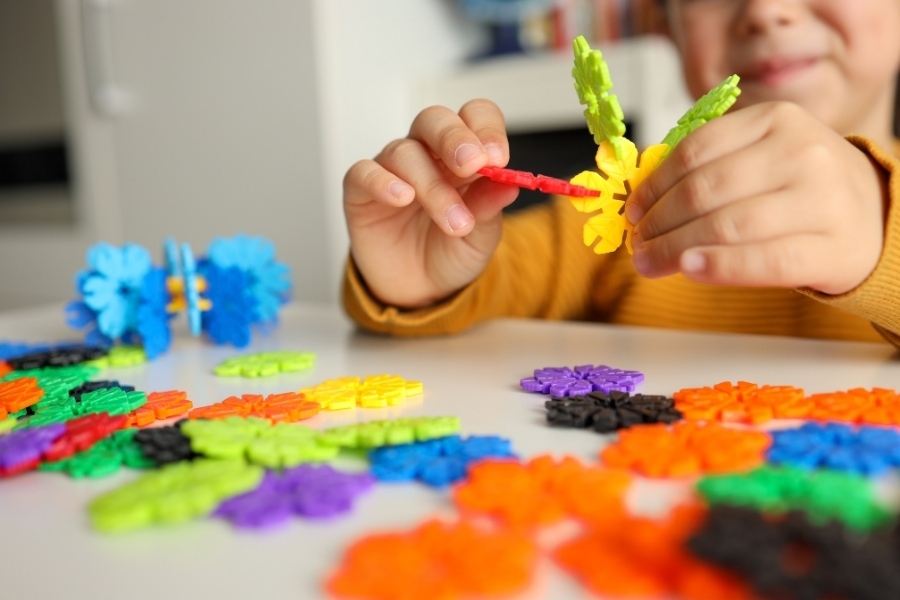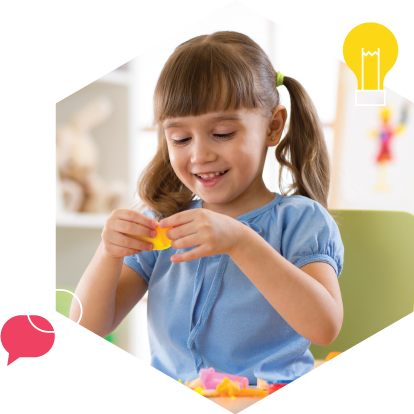
Early Childhood Education: Why the Early Years Matter Most
Key Takeaways
| Aspect | Summary |
|---|---|
| Why This Topic Matters | Early childhood is a critical window for shaping lifelong learning. |
| Cognitive Benefits | Builds memory, attention, language, and problem-solving foundations. |
| Problem-Solving Benefits | Encourages resilience and flexible thinking through hands-on play. |
| Emotional Development | Fosters empathy, confidence, and strong social bonds. |
| Practical Applications | Prepares children for school, friendships, and independent growth. |
Why Early Childhood Education Is the Foundation for Lifelong Learning
Imagine a curious 4-year-old building a tower of blocks. She’s playing, experimenting, solving problems, and expressing herself. These everyday moments are the heart of early childhood education.
The early years are when a child’s brain develops most rapidly. In fact, more than 90% of brain growth happens before age five. During this time, children build the foundational skills for how they learn, relate, and explore the world. That’s why these years are important, and they’re transformative.
At ActivityBox, we see firsthand how intentional, play-based learning fosters creativity, confidence, and connection. Whether it’s storytelling, pretend play, or hands-on crafting, each activity becomes a building block in a child’s lifelong journey.
Understanding Developmental Milestones in Early Childhood
Did You Know?
According to milestone guidelines from the CDC, observing how a child plays, learns, speaks, and moves can reveal whether their development is on track.
These milestones include things like using two-word phrases around age 2, drawing simple shapes by 4, or cooperating with peers by 5. Each reflects growing cognitive, physical, and social skills.
When early education aligns with these milestones, children are more likely to thrive. It allows caregivers to provide just the right mix of encouragement and challenge, supporting growth without pressure.

Explore more about developmental milestones in early childhood.
What Are the 4 Stages of Early Childhood Education?
Understanding how children think and learn is essential to creating effective early childhood education. One of the most influential frameworks comes from Swiss psychologist Jean Piaget, who outlined four key stages of cognitive development.
Piaget’s theory of cognitive development explains that children build knowledge actively by exploring, playing, and engaging with their surroundings, not just by listening or watching.
Piaget’s 4 Stages of Development:
- Sensorimotor (0–2 years)
Learning happens through movement, touch, and sensory discovery. - Preoperational (2–7 years)
Children begin to use symbols and imagination but still struggle with logic and other viewpoints. - Concrete Operational (7–11 years)
Logical thinking develops, especially with hands-on or real-world activities. - Formal Operational (12+ years)
Abstract reasoning, planning, and problem-solving become possible.
For ActivityBox families, most children are in the preoperational and early concrete operational stages. That’s why our learning kits focus on tactile exploration, storytelling, and guided problem-solving: the very types of play that align with how children naturally learn at these stages.

Get the Free Playbook for Early Learning at Home
Discover simple ways to support your child’s growth through creative play, built around real early childhood education principles, not screen time or pressure.
Play-based, age-appropriate activities
Printable planner to guide your week
Fun, no-prep ideas for busy parents
Designed by educators, loved by kids
👉 Perfect for ages 3–8 and aligned with what children are learning in preschool and kindergarten.
Why Fine Motor Skills Matter for School Readiness
Have you ever watched a child proudly button their shirt or carefully cut along a line? These small victories are signs of strengthening fine motor skills, the foundation for independence and learning.
Activities like threading beads, using scissors, or painting with a brush help children:
Strengthen hand and finger muscles
Improve hand-eye coordination
Build focus and persistence
According to NAEYC, play helps children practice and refine motor skills while building confidence and resilience.
Through play, children develop precision and control without even realizing they’re practicing. From opening lunchboxes to writing their names, these skills empower them to engage fully in the world around them.
See how early childhood education and fine motor deveopment is supported by ActivityBox
Learning Through Play: A Child’s Natural Superpower
There’s a moment, somewhere between giggles and glitter, when a child becomes completely absorbed in their own world. Maybe they’re astronauts launching from the sofa. Maybe they’re scientists, elbows-deep in color-mixed goo. Whatever the setting, the learning is real.
But here’s the catch: they don’t know they’re learning. And that’s the magic.
In play, children build entire systems of understanding. They experiment with rules. They stretch language, test boundaries, and begin to make sense of things far bigger than themselves.
Harvard’s Center on the Developing Child calls play “essential,” not optional. It’s through play that children develop the brain functions that support attention, memory, flexibility, and emotional growth.
Learning through play:
Boosts imagination and curiosity
Reinforces early math, science, and language skills
Teaches collaboration and emotional regulation
That’s why every ActivityBox project is designed with play at its heart. Our projects invite children to explore real-world themes – from outer space to restaurants – sparking questions, stories, and discoveries along the way.

Explore how each ActivityBox Theme supports early childhood education
How Play-Based Learning Sparks Real Growth
Not all play is created equal. What truly fuels early development is purposeful, imaginative, and hands-on play guided, but never rigid.
At ActivityBox, that’s exactly what our approach delivers. Our Discover → Make → Play framework is a simple, research-backed model that supports creative growth at every stage.
The Discover → Make → Play Framework
| Phase | Focus Area | Why It Matters |
|---|---|---|
| Discover | Spark Curiosity | Kids explore new materials and ideas, boosting observation, inquiry, and a love of discovery. |
| Make | Hands-On Creativity | Children turn ideas into tangible projects, learning through experimentation and building resilience. |
| Play | Imaginative Learning | They bring creations to life through pretend play, storytelling, and social connection. |
Kids bring creations to life through pretend play, storytelling, and social connection.
This method encourages children to follow their curiosity, test their ideas, and share what they’ve created, all in one joyful cycle. It meets them where they are, then gently expands their confidence and skills.
Why Imaginative Play Belongs in Early Education
Imaginative play is a central part of how young children make sense of the world. When they act out everyday roles or dream up fantastical scenarios, they’re learning how to think flexibly, communicate ideas, and manage emotions in real time.
These experiences support key developmental goals in early childhood education, from cognitive growth to emotional regulation and social connection. Pretend play introduces children to ethical thinking, encourages perspective-taking, and nurtures curiosity.
One mother shared how her daughter Maya, age five, struggled with separation during preschool drop-off. Together, they created daily role-play games where Maya took the lead, becoming a teacher, a helper, or an explorer. Over time, Maya began approaching real-life transitions with more confidence and calm.
The Hong Kong Education Bureau highlights early education as a foundation for developing creativity, intellect, and ethics, qualities deeply supported by imaginative play.
When early learning environments make space for pretend, children don’t just stay engaged, they grow in ways that prepare them for lifelong learning.
Support Early Learning Where It Matters Most — Ages 3–8
In Hong Kong, the early school years lay the foundation for lifelong learning. As your child settles into the new term, you can support their growth at home with creative, hands-on activities that align with what they’re learning in class.
Here’s how to build confidence and curiosity at home:
Follow your child’s lead with open-ended play
Introduce real-world themes through stories and making
Encourage exploration, not perfection
Create small moments of learning every day
Bring early childhood education to life at home with ActivityBox. Join today
FAQs About Early Childhood Education
What age is best to start early childhood education?
Most children in Hong Kong begin K1 around age 3, but early education truly starts much earlier through songs, stories, and play in everyday life. These early interactions help build the foundations for language, curiosity, and emotional development.
How do I know if my child is learning enough through play?
Watch how your child explores, asks questions, and invents stories. These are strong signs of learning. If they’re engaged, experimenting, or using new words, they’re developing key skills even if it looks like simple fun.
Is preschool necessary for success later in life?
While not mandatory, high-quality early childhood education supports lifelong success by building cognitive, emotional, and social foundations. Programs that include play-based and hands-on learning are especially effective.
My child prefers playing alone. Is that okay?
Yes. Independent play encourages focus, imagination, and confidence. Over time, many children naturally move toward more social play, especially when adults offer gentle opportunities to connect.
How can I support my child’s transition into K1 or a new school year?
Can ActivityBox help supplement preschool or kindergarten learning?
Have more questions?
We’re here to help! Contact us .
